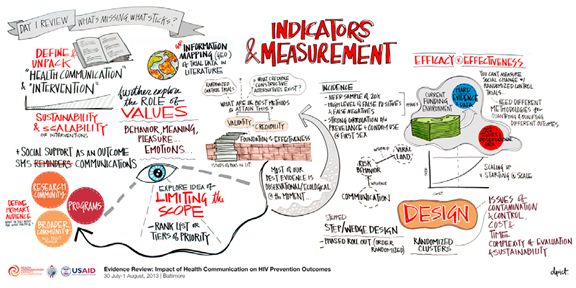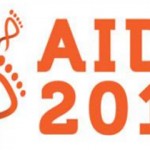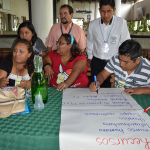What are the Best Ways to Measure Health Communication Outcomes?
Researchers and program planners alike often ask themselves: what are the best ways to measure health communication outcomes?
Research design and measurement are critical to assessing behavioral outcomes in the realm of HIV and AIDS. To further capture the evidence and demonstrate how health communication may have the biggest impact on HIV prevention, care and treatment outcomes, rigorous measurement is essential.
There are of course, many challenges in evaluating the impact of health communication programs. There are also many innovative methods for analysis. Donors are always looking for stronger evidence, and the field of health communication must apply as much rigor as is possible when evaluating interventions. Choosing the most appropriate design largely depends on the purpose of the study and the goals of the research or evaluation. All methods may have a time and place – but should continue to be used with an eye towards as much rigor as possible to ensure credibility within the field of health communication – as well as among biomedical experts.
Several suggestions have been made related to measurement and methods for designing and evaluating health communication. Some captured from an expert consultation held by HC3 include:
- When it makes sense to use randomized control trials (RCTs) and even when an RCT isn’t possible or practical, it’s important to include as much randomization as possible.
- Choosing the most appropriate design largely depends on the purpose of the study and the goals of the research or evaluation.
- All methods may have a time and place, but should continue to be used with an eye towards as much rigor as possible to ensure credibility.
- Researchers should triangulate using DHS and other data sets to strengthen the reliability of outcomes.
- Importance of acknowledging the role of confounding factors affecting conclusions in observational studies.
In this Trending Topic: Measuring HIV Health Communication Outcomes, HC3’s Research and HIV teams present resources to help guide health communication practitioners working in the field of HIV and AIDS.
We welcome other resources and tools for inclusion, so please register on the Health COMpass site and contribute materials.








Leave a Reply
Want to join the discussion?Feel free to contribute!